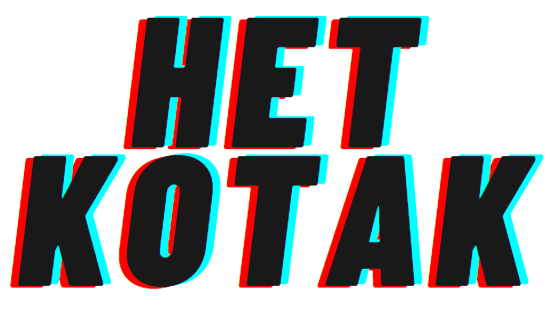Mastering Data Replication: A Technical Deep Dive
Introduction
Data replication is the backbone of modern database systems, ensuring data availability, fault tolerance, and scalability. In this technical guide, we’ll conduct a detailed exploration of data replication, diving into the intricacies of synchronous and asynchronous replication, single leader, multi-leader, and leaderless replication, as well as primary/secondary replication methods, including statement-based, Write-Ahead Logging (WAL), and logical replication.
Synchronous and Asynchronous Data Replication
Synchronous Replication: Consistency at Scale
Mechanism:
Synchronous replication ensures real-time synchronization between primary and secondary databases. Each write operation on the primary is not deemed complete until it’s replicated to all secondary databases.
Advantages:
- Data Consistency: Guarantees consistency across all nodes.
- Reliable Transactions: Ensures that transactions are durable and persistent.
Challenges:
- Latency: The synchronous nature introduces latency, impacting write performance.
- Scalability: May become a bottleneck for write-intensive applications.
Asynchronous Replication: Decoupling for Performance
Mechanism:
Asynchronous replication allows the primary database to continue without waiting for secondary acknowledgments, reducing latency.
Advantages:
- Low Latency: Enables faster write operations.
- Scalability: Facilitates better scalability for write-intensive workloads.
Challenges:
- Inconsistencies: Potential for data inconsistencies between primary and secondary databases.
- Limited Data Integrity: Guarantees of data integrity are relaxed.
Data Replication Models
We will discuss the following models in depth:
- Single leader or primary-secondary replication
- Multi-leader replication
- Peer-to-peer or leaderless replication
Single Leader Replication: Centralized Control
Mechanism:
Single leader replication designates one node (leader) to handle all write operations, while secondary nodes (followers) replicate the data.
Advantages:
- Consistency: Centralized control ensures data consistency.
- Simplicity: Simpler to implement and manage.
Challenges:
- Write Bottleneck: The leader can become a bottleneck for write-intensive applications.
Replication Methods:
Statement-Based Replication: SQL in Motion
Mechanism:
Statement-based replication involves replicating SQL statements from the primary to the secondary database.
Advantages:
- Simplicity: Simple to understand and implement.
- Query Flexibility: Allows for flexibility in replicating queries.
Challenges:
- Schema Differences: May lead to inconsistencies if database schemas differ.
- Performance Overhead: Replicating entire SQL statements can introduce performance overhead.
Write-Ahead Logging (WAL): Transaction-Level Replication
Mechanism:
WAL replication replicates changes made to the database at the transaction log level.
Advantages:
- Reliability: Replicates changes reliably at the transaction level.
- Performance: Efficient for replicating large volumes of data changes.
Challenges:
- Complexity: Requires careful handling of transaction logs for replication.
- Storage Overhead: Transaction logs can result in storage overhead.
Logical Replication: Flexibility in Schema Evolution
Mechanism:
Logical replication replicates logical changes to the data, offering flexibility in handling different database schema versions.
Advantages:
- Schema Evolution: Allows for changes in database schema versions.
- Heterogeneous Environments: Suitable for heterogeneous database environments.
Challenges:
- Complexity: Implementing logical replication requires careful consideration of data changes.
- Performance: May introduce performance overhead in certain scenarios.
Multi-Leader Replication: Distributed Autonomy
Mechanism:
Multi-leader replication allows multiple nodes to accept write operations independently.
Advantages:
- Write Scalability: Enhances scalability by distributing write operations.
- Fault Tolerance: Increases fault tolerance with multiple writable nodes.
Challenges:
- Conflict Resolution: Conflicting writes pose challenges that need resolution.
- Complexity: Managing distributed writes introduces complexity.
Leaderless Replication: Decentralized Equality
Mechanism:
Leaderless replication eliminates the concept of a dedicated leader node. All nodes are equal and can handle both read and write operations.
Advantages:
- Fault Tolerance: Enhances fault tolerance as there’s no single point of failure.
- Read Scalability: All nodes can serve read requests independently.
Challenges:
- Consistency: Ensuring consistency in a decentralized environment is challenging.
- Coordination: Requires coordination for write operations to maintain order.
Conflict Resolution in Multi-Leader Replication
Conflict resolution becomes critical in multi-leader replication where conflicting writes can occur simultaneously. Different approaches include:
- Last Write Wins (LWW): Simple resolution where the last write to a piece of data is considered valid.
- Timestamp-Based Resolution: Assigning timestamps to writes and resolving conflicts based on chronological order.
- Automated Conflict Resolution Algorithms: Custom algorithms to automatically resolve conflicts based on predefined rules.
Conclusion
In this technical exploration of data replication, we’ve delved into the mechanics of synchronous and asynchronous replication, single leader, multi-leader, and leaderless replication, and various primary/secondary replication methods. The choice of replication strategy depends on the specific needs of your application, whether it’s consistency, scalability, or fault tolerance. Armed with this technical knowledge, you can navigate the complexities of designing robust and resilient database systems, orchestrating data with precision in the ever-evolving technological landscape.
